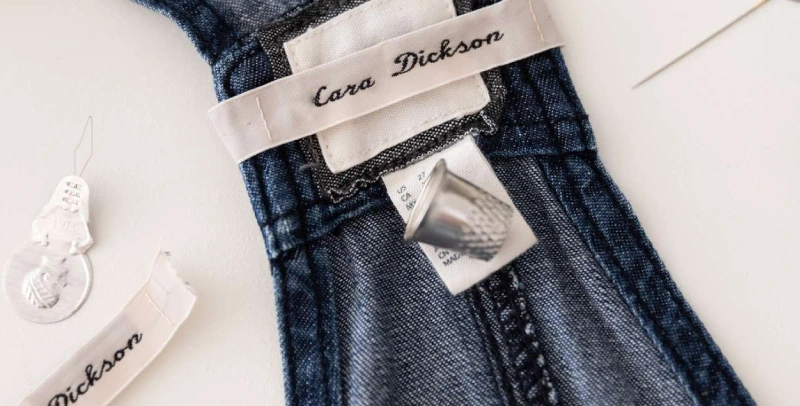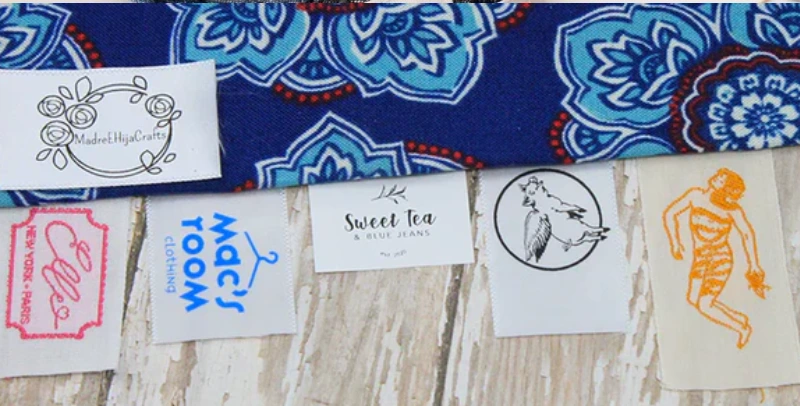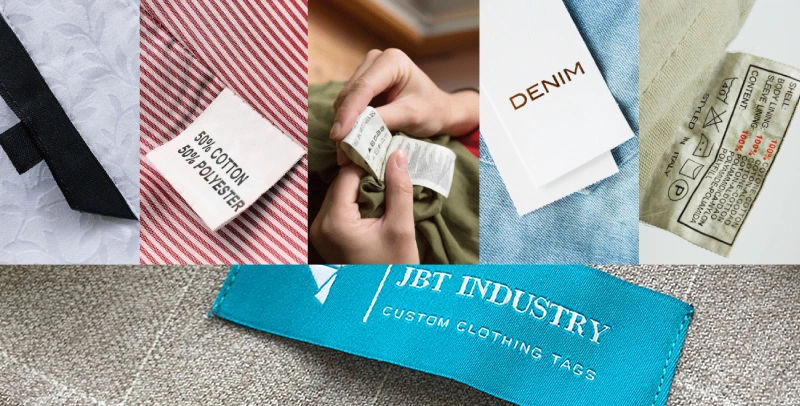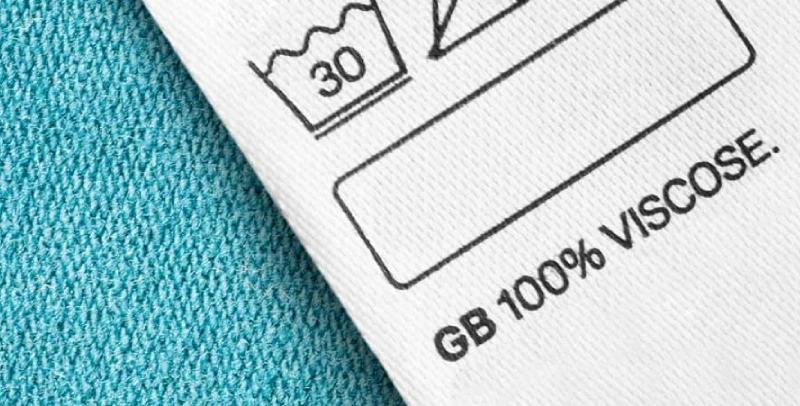Lost jackets, itchy tags, daycare chaos—labeling kids’ clothes solves it all. Beyond names, How to label kids clothes, it’s about safety, comfort and making childhood just a little easier. Here’s why those tiny tags matter more than you realize.

Why Labeling Kids Clothes Matters More Than You Think
If you’ve ever stood in a daycare hallway holding up two identical tiny sweaters asking, “Is this yours?”—you already understand why labeling matters. For parents, caregivers, and even manufacturers, labeling isn’t a small afterthought—it’s a big deal. In fact, it often means the difference between chaos and calm.
Labeling kids’ clothes helps more than just avoid mix-ups. Schools and childcare centers require it for hygiene and identification, especially in shared spaces like cubbies and lockers. At home, it keeps the peace when siblings have similar sizes. For clothing manufacturers like us, labeling is part of our promise—to ensure the garments are safe, comfortable, and traceable.
We’ve seen firsthand how a missing label leads to lost sleepwear and unhappy parents. In fact, our wholesale customers often emphasize that the labeling quality impacts their resale reputation. If a label peels after two washes or irritates a child’s skin, trust erodes.
According to Wikipedia’s entry on clothing labels, labeling also plays a legal role. It often contains care instructions, fabric details, and safety information. For instance, in the U.S., the Consumer Product Safety Improvement Act (CPSIA) requires manufacturers to include tracking information on children’s clothing labels. That’s not optional—it’s federal law.
But beyond rules and regulations, there’s something more human at play: labeling is an act of care. Whether you’re a parent prepping clothes for preschool, or a pajama producer like us sending off a shipment, that little tag says, “This item belongs to someone special.”
And that’s a message worth getting right.
The Industry Standard: Labeling Requirements According to ASTM and ISO

Labeling isn’t just a practical solution—it’s an industry-standard expectation. Across the globe, manufacturers follow recognized guidelines that define how children’s clothes should be labeled. For us as a pajama manufacturer, those standards aren’t just a checklist—they’re a roadmap to producing high-quality, regulation-compliant garments.
Let’s start with ASTM D5489, which standardizes care symbols used in the U.S. It ensures everyone—whether you’re in a New York laundry room or a California daycare—understands how to care for a garment just by glancing at the label. Meanwhile, ISO 3758 does the same globally, offering a consistent set of symbols recognized across continents.
But what really governs kids’ clothes labeling is the Consumer Product Safety Improvement Act (CPSIA). This U.S. regulation demands that all children’s clothing must include a permanent label stating the manufacturer, batch or lot number, and place/date of manufacture. Why? Traceability. If something goes wrong, we must know exactly where and when a product was made.
In addition, flammability standards are non-negotiable for pajamas. Per 16 CFR Part 1615/1616, we label our sleepwear with “Flame Resistant” or “For snug fit only” tags, depending on the material. It’s literally about saving lives.
These aren’t just words to us. We’ve spent years aligning our production floors to meet these benchmarks, not just because we have to—but because our customers trust us to do it right. We don’t cut corners, and neither should anyone who cares about quality kidswear.
Choosing the Right Label Type for Children’s Clothing

Picking the right label isn’t just about budget or aesthetics—it’s about comfort, durability, and compliance. We’ve tried them all, from stick-ons to woven sew-ins, and the truth is this: different labels serve different needs.
Let’s start with sew-in labels, the gold standard. As manufacturers of kids’ pajamas, we swear by them. Why? They’re long-lasting, washer-friendly, and impossible for curious little fingers to peel off. Sew-in labels are ideal for bulk production, especially when we work with wholesale clients who demand consistent quality and label durability.
Iron-on labels are next. These work great for parents labeling clothes at home, especially for school or daycare. Just a hot iron, a few seconds, and boom—done. But not all fabrics take heat well. That’s why we recommend iron-on labels only for natural fabrics like cotton, and always test them with a scrap piece first. Also, frequent washing may reduce their adhesion over time.
Then you have stick-on labels. These are perfect for quick, temporary use, like labeling a jacket during summer camp. But don’t expect them to survive a high-heat dryer. In fact, many parents have told us they use stick-on labels only for items that won’t be laundered frequently, like shoes or lunch bags.
Lastly, fabric markers and stamps are budget-friendly alternatives. Great for writing a child’s name on a shirt collar quickly. But beware: not all markers are created equal. We’ve tested a few, and unless it’s labeled “laundry-safe,” the ink will fade—sometimes after just one wash.
For us, the label is more than a name tag. It’s a piece of the brand, a fragment of our craftsmanship. So whether it’s a custom-woven tag or a heat-transfer name plate, we always ask: Will this last? Will this itch? Will this help?
Because when it comes to labeling kids’ clothes, it’s not about sticking something on—it’s about making it stay on and feel right.
Special Considerations for Baby Pajamas and Sleepwear
Labeling sleepwear brings unique challenges. These aren’t just any garments—they’re worn during the most sensitive hours of the day: bedtime. At our factory, we take extra care with pajama labels, and for good reason.
First and foremost, sleepwear in the U.S. must meet flammability requirements under 16 CFR Part 1615/1616, as we mentioned earlier. This means labeling must clearly state if the pajamas are flame-resistant or designed for a snug fit to avoid fire hazards. These aren’t just safety suggestions—they’re legal mandates.
But it doesn’t stop there. Kids sleepwear needs to be ultra-soft and irritation-free. Traditional woven labels with stiff edges can scratch a child’s neck or side while they sleep, disrupting rest and comfort. That’s why we use heat-sealed satin labels or printed tags directly on the fabric for many of our designs. These alternatives eliminate the itch factor while still offering all the info.
We also account for children with sensitive skin. Labels made from recycled poly or coarse cotton may seem eco-friendly, but if they’re rough, they’re a no-go. Instead, we use OEKO-TEX certified materials, which are hypoallergenic and gentle against delicate skin. These choices reflect both compliance and compassion.
And don’t forget care instructions. Pajamas are washed often—sometimes daily. Without proper labeling, shrinkage, color fading, or fabric damage can occur. We ensure every label includes clear washing and drying instructions, using ISO symbols and easy-to-understand text, so parents can clean garments with confidence.
Sleepwear isn’t just about cute prints and soft cotton. It’s about safety, comfort, and peace of mind—and the label plays a surprisingly large role in that promise.
How to Label Kids Clothes: Where to Stick It?
If we had a dollar for every time a parent said, “My child tore off the label again,” we could open another factory.
Placement is everything. Too high, and it’s itchy. Too low, and it’s forgotten. Here’s what we’ve learned after labeling tens of thousands of kids’ pajamas.
1. Neck Area (Inside Back Collar)
The classic choice. Easy to see and great for name visibility. However, if the fabric is thick or the stitching is rough, kids will feel it. We use ultra-soft satin labels or print directly onto the inside of the fabric to avoid discomfort.
2. Side Seams
This is our go-to for care labels and brand tags. It’s discreet and less likely to bother a child during sleep. For two-piece sets, we place one label on the inside seam of the shirt and one on the pants for easy reference.
3. Waistband (Inside Back)
Ideal for labeling bottoms. But again, comfort is key. Labels placed here must be either very soft or integrated into the waistband fabric itself.
4. Cuffs or Sleeve Hems
This is less common but very useful for schools or camps where quick identification matters. Some parents even request name labels on cuffs for visibility during coat collection.
5. Tagless (Printed)
Increasingly popular, tagless labeling uses heat transfer or screen printing. It’s completely flat and zero-itch. Perfect for toddlers and babies. We’ve invested in this method heavily—it’s a game-changer for sleepwear.
Whatever method you choose, the golden rule is simple: Test it. Wash it. Feel it. If it annoys you, it’ll drive a child crazy.
Customizing Labels for Bulk Orders: What Wholesalers Need to Know
When dealing with bulk orders, labeling is no longer about one child—it’s about hundreds, maybe thousands. We’ve partnered with wholesalers worldwide, and one thing’s clear: custom labeling can make or break a shipment.
Our wholesale clients care deeply about brand consistency. Whether they’re reselling in boutique stores or distributing through e-commerce platforms, the label must reflect professionalism and identity. That’s why we offer:
- Woven labels with logos
- Custom sizing tags (inches/cm)
- Care labels in multiple languages
- Batch-specific tracking tags
We also integrate barcode systems, which help retailers manage inventory more effectively. For example, each size and color variation comes with a unique scannable code, reducing inventory errors and speeding up warehouse processes.
Labeling in bulk also means preparing for global compliance. European clients ask for REACH-compliant labels, while American partners demand CPSIA tracking, and Australian distributors want fiber content and fire safety warnings. Our in-house compliance team ensures every label set matches the country-specific regulations.
But perhaps the biggest value we offer is low minimum order quantities (MOQs) for custom labels. This flexibility means even small wholesalers can afford to brand their lines without taking on too much inventory.
FAQ
What’s the best label type for kids with sensitive skin?
For children with eczema or allergies, 100% cotton woven labels or medical-grade silicone tags are ideal. Avoid synthetic materials with harsh adhesives. Labels should be stitched flat against seams to minimize skin contact. Always check for OEKO-TEX® certification to ensure no harmful chemicals are present.
How can I ensure labels survive frequent washing?
To maximize durability, use double-stitched satin labels with reinforced edges. Screen-printed text lasts longer than digital prints. For iron-on labels, choose high-temperature adhesive and apply to fabric before sewing seams. Industrial testing shows polyester laminated labels withstand 100+ washes best.
Are iron-on labels safe for baby clothes?
Yes, if you select phthalate-free, latex-free adhesives designed for infant wear. Always apply to side seams (never near necklines). Test a small area first at low heat (280°F max). For extra safety, combine with a single stitch at each corner.
Conclusion
Labeling kids’ clothing isn’t just about avoiding lost sweaters or meeting regulations—it’s about care, safety, and trust. From hypoallergenic tags for sensitive skin to flame-resistant warnings on pajamas, every detail matters. For parents, it’s peace of mind. For manufacturers, it’s a commitment to quality. And for kids? It’s the invisible hug in every stitch, reminding them, “This was made just for you.”
Whether you’re a brand crafting thousands of garments or a parent ironing on a name tag, remember: Great labeling isn’t seen—it’s felt. And that’s why we take it so seriously.


